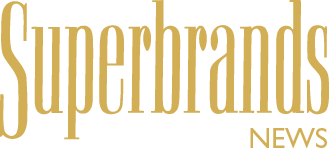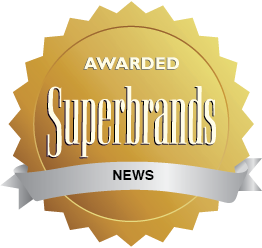Could A Crisis Open Up A Brand Repositioning Door? – Forbes
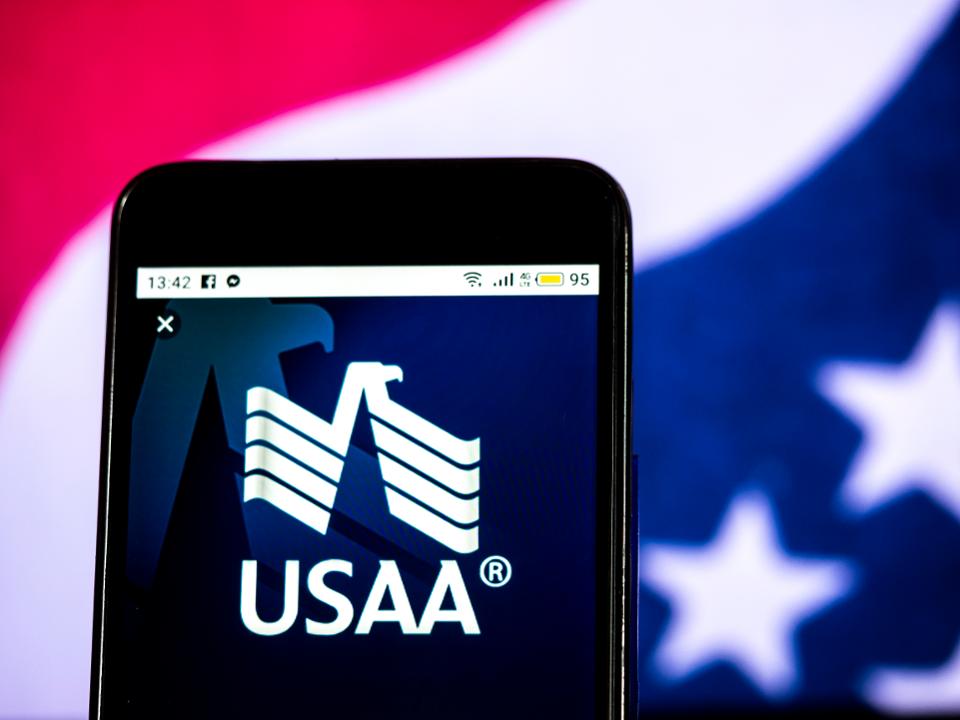
|
Getting your Trinity Audio player ready...
|
SOURCE: Scott Davis | Forbes
As we all absorb the constant swirl of changes due to the COVID-19 pandemic, it’s still impossible to say there’s a “right” way for companies to act. Never before have brands been put in such an accelerated crisis, having to rethink their entire messaging strategy, voice and even their purpose in the world.
People want to know what brands have to say, but with messages coming out at a rapid-fire pace, it’s important to focus on what brands are doing–something much harder to pull off. People are wondering whether they can continue to trust companies on the other side of this crisis. For some brands, that means they have a truly opportune moment-in-time to reposition themselves to drive even greater relevancy and sustainable, uncommon growth.
It’s too soon to say how the remaining months of social distancing, surging unemployment and inevitable cabin fever will reshape the consumer landscape. But we already see three clear brand “best practices” emerging and one big question every brand has to address. Let’s start with the best practices:
Stay True to Your Purpose
While companies making bold moves may be in the minority, I’m awed by the overall agility, responsiveness and guts of a few. For many of these brands, having a strong purpose and knowledge of why they exist in the world, has made their on-ramp into this crisis fairly seamless.

USAA offers banking, investing and insurance to people and families who serve, or served, in the United
States Armed Forces. Photo illustration by Igor Golovniov | SOPA Images | LightRocket via Getty Images.
For USAA, one of the most purpose-led brands in the world, it was natural that they would credit their members – many of whom also are working on the front lines of the crisis – with over $500 million in discounts. As Tony Wells, SVP of Marketing at USAA recently commented, “Serving our mission and members is all that matters. Do that well and everything else will fall in place. We serve the best customers in the world.”
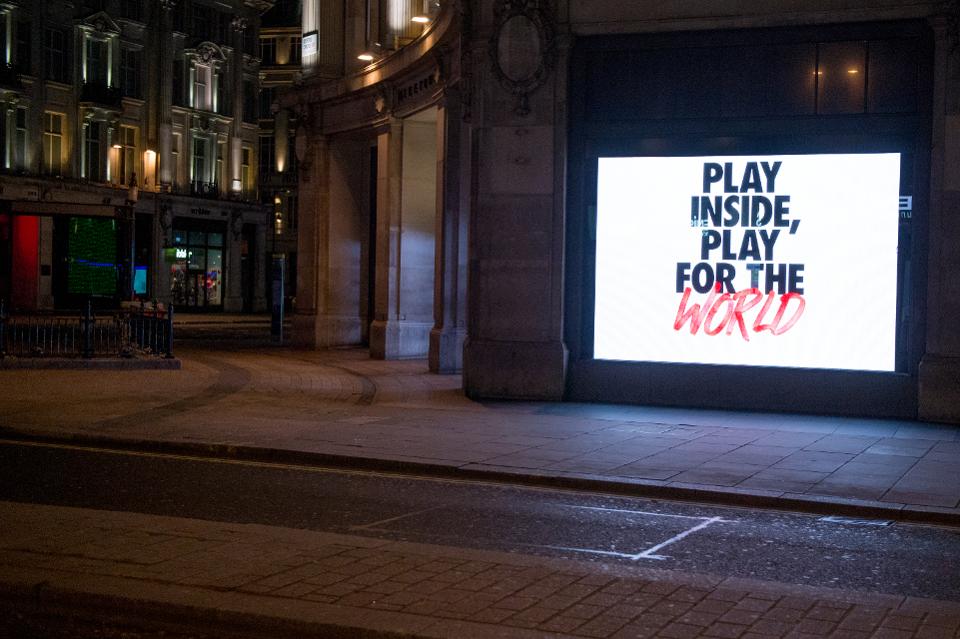
London’s flagship London Store showing the new Nike play Inside, Play for the world campaign. Nike’s
COVID-19 community response has committed over $15 million to response efforts. Photo by Getty Images.
Nike has stayed true to its overall purpose of using the power of sport to bring innovation and inspiration to every athlete in the world. To witness, Nike is leveraging their extensive digital ecosystem to provide “the athlete within us all” with the tools, motivation and affirmation to help fuel physical and mental health, on their own, at home.
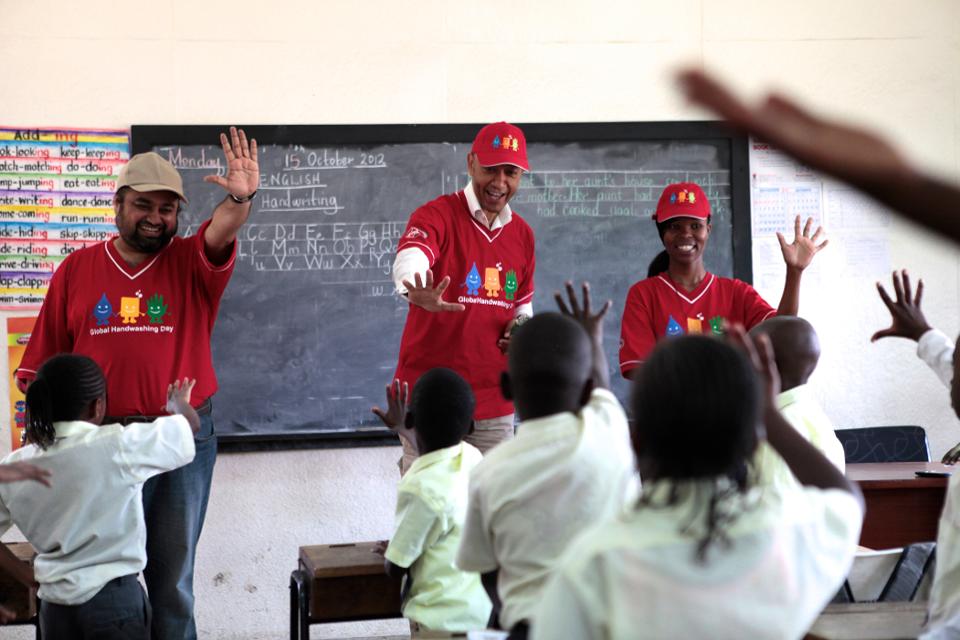
Global Handwashing Day is an annual awareness day which aims to put the global spotlight on handwashing
with soap as a lifesaving habit. Unilever is working with the UK Government to target a billion people
worldwide with a COVID-19 handwashingcampaign. Photo by Frederic Courbet | Getty Images for Unilever.
Unilever remains on-purpose in being a force for good in the world with its May 12 “Day of Service,” which will have its entire U.S. business donate “every essential item” produced that day at its 14 U.S. factories. It’s also devoting the day’s marketing and advertising efforts, resources and talent to support nonprofits.
Importantly, all of these companies and more are consistently (and appropriately) thanking the early responders, front-liners, the overall healthcare community as well as their internal employee teams in personal and inspiring ways…all very purpose based.
Do What you Say, Say What You Are Doing
The experiences and actions that companies of all sizes, across categories, are taking are truly inspiring. Take food. Companies like Domino’s, KFC, Chipotle and thousands of local restaurants are donating tens of millions of meals to exhausted healthcare workers and first responders. Others, including Taco Bell and Burger King, are supporting millions of children who can no longer count on meals at school.
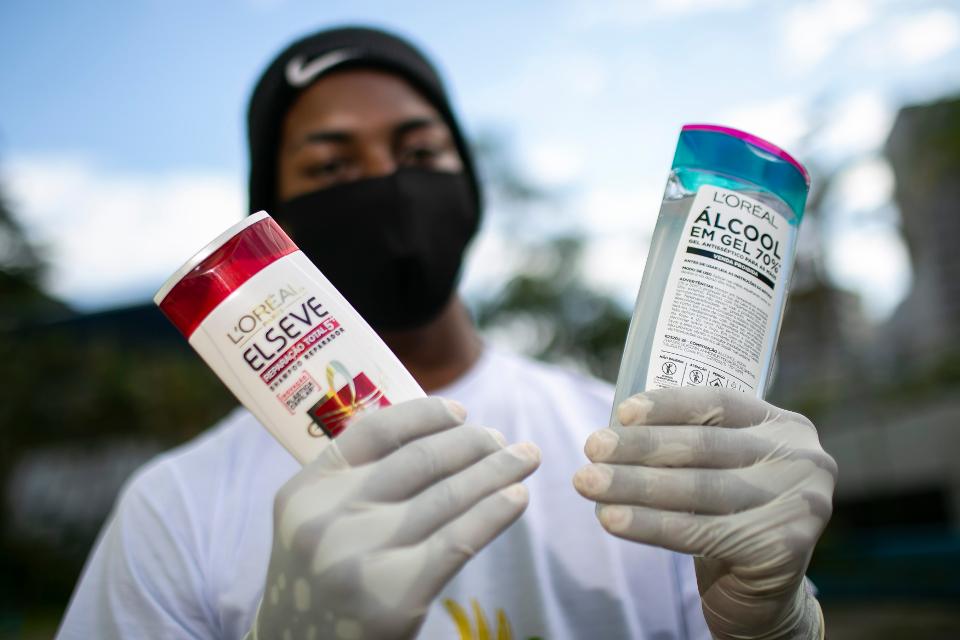
A volunteer of a non-governmental organization ‘Familia na Mesa’ shows bottles of hand sanitizers
L’Oréal is leading the charge in hand-sanitizer production, while Gap is currently designing masks and gowns as Tesla races into ventilators. Sesame Street remains committed to supporting families through its Caring for Each Other initiative with new content and resources designed to educate, comfort and entertain parents, caregivers and children during these trying times.
Some moves are so simple they’re genius: Crocs, already beloved in medical facilities, is donating a pair of free shoes to every healthcare worker in the U.S.
Importantly, deciding what your next set of experience moves will be are as critical as the actions you are currently taking. Deciding if you are going to take on more societal “acts” as part of your brand goes hand in hand with the purpose discussion above and the repositioning question below.
Make Sure Your Brand Voice Meets the Moment
Smart brands recognize that this is not necessarily the time to continue on with the voice, tone, content, etc. they have worked so hard to articulate for years. Instead, agile brands are meeting the moment with a voice that is more thoughtful, human, relevant and consistent with the times.
Frito Lay is doing a great job of not talking of about Flamin’ Hot Cheetos, for now, and shifting their narrative to articulating all they are doing as an enterprise to meet the moment. This includes creating 3,000 new full-time jobs with benefits, donating over $15 million to relief efforts, providing 20 million meals to at-risk students and families, and funding mobile health clinics across the United States to provide COVID-19 screenings to the public. I expect their brand teams to go right back to their fun, irreverent brand building for Cool Ranch Doritos and Funyuns soon but, for now, I appreciate their voice meeting the moment.
https://www.youtube.com/watch?v=3_t9niMNkdg&feature=emb_title
Likewise, Budweiser, which has already had a $300 million hit from the virus, has plowed its entire sports-marketing budget into pandemic-related efforts, including producing hand sanitizer and turning stadiums into blood-drive centers. And its “This Bud’s for the home team” messaging strategy offers all the proof anyone needs that the best creative ideas often happen overnight, not from 18 months of market research.
Similarly, CareerBuilder is acknowledging the current context to shift its voice, tone, messaging and content strategy. Last week, CareerBuilder launched its newly repositioned brand (just as unemployment rates were soaring) tagged “We’re building for you,” recognizing that it’s previous slogan, “Work can work,” felt detached and too functional. This brand shift moves to something more inspirational and emotional, during a time when job loss threatens so many.
All brands have a brand voice, tone and persona, as well as a content and messaging strategy, yet very few brands manage them in a truly holistic and strategic manner. This crisis has given many a time-out to think through how to do each of these together and separately more effectively, going forward.
Make the Call: Is This All Part of My New Repositioned Brand or Not?
Many companies are leaning into the crisis in ways that are truly authentic to their brand and what they stand for (see J&J and State Farm). Others are taking a more functional approach with the obligatory e-mail, home page and thankful messaging (see Verizon and Sprint), while others are making moves that can serve as a springboard for a potential repositioning of their business and brand.
While I have no illusion that Taco Bell or KFC or Verizon or Frito Lay are looking to do a repositioning of their brand, for others seeking a higher-order purpose, this crisis may have provided the perfect catalyst for asking themselves if they have finally become the brand they always aspired to, over this short amount of time, through their many “brandom acts” or are they just on a three-six month break until they can go back to business as usual, pre-crisis.
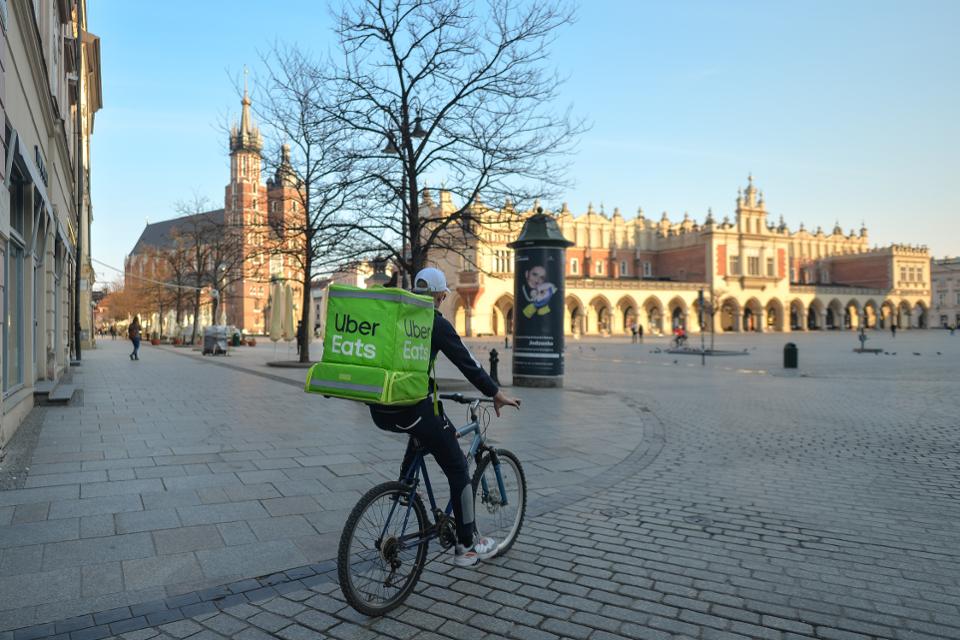
A Uber Eats currier during his duty seen in an empty Krakow’s Market Square. Local food businesses adapt to
a new reality of coronavirus by providing increased delivery services to their customers. Photo by Artur Widak |
NurPhoto via Getty Images.
A perfect example of this is with the purpose-challenged brand and business, Uber. Uber has definitely risen to the occasion of living its stated intention of “igniting opportunity by settling the world in motion,” by donating 10 million free rides and deliveries for coronavirus relief, while touting its “thank you for not riding with us right now” #stayhome campaign. Is this a moment in time for Uber to pull a page from Lyft and really become a higher order brand or does it go back to the more functional, often controversial brand it has been in the past?
Similarly, in the much-maligned tech industry, does eBay get a do-over through its inspired offers of free services for small businesses eyeing e-commerce, including an accelerator program for brick-and-mortar retailers, pledging up to $100 million in support? Same question for Google, who lacks any real emotional connectivity, by promising $800 million in aid to small and medium-sized businesses, including $340 million in free ad space, to help them stay afloat? Is this a moment in time for many tech companies to go beyond the functional offerings they were built upon to something more important and meaningful in the world?
Finally, does United, Marriott, Delta and others force consumer reconsideration, tied to how they are rethinking/reimagining their loyalty programs, with two-year grace periods, for instance, or will they go back to business as usual and get dinged for their “loyalty hostage” mentality in many of those brand studies we all know so well? Will the Walmart brand get a fresh start and no longer play second fiddle to “higher-order” brands, such as Target, Amazon and Trader Joes, tied to their incredible, multi-pronged approach to COVID-19?
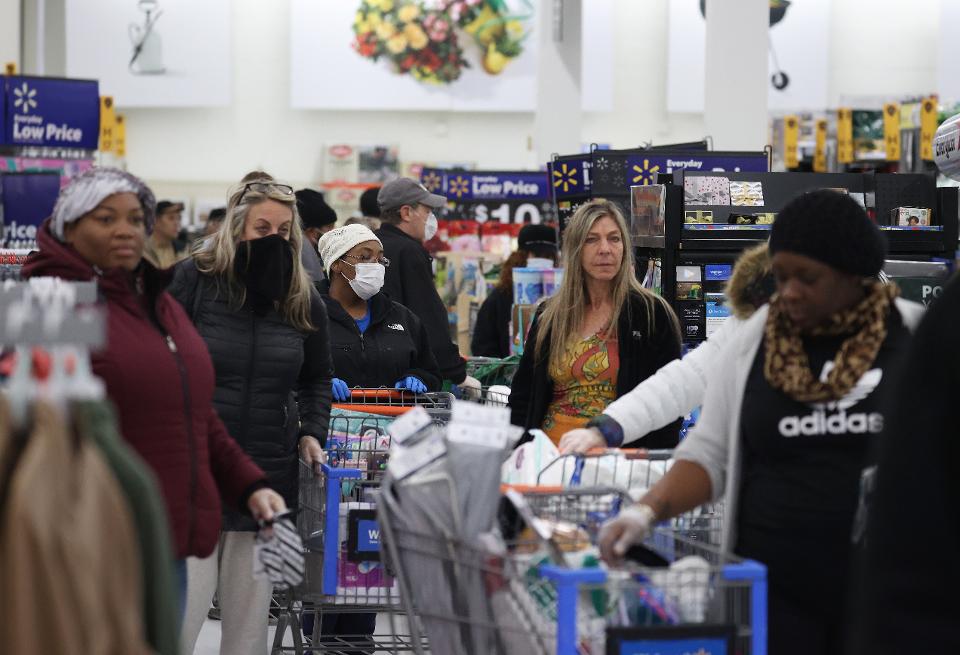
People wearing masks and gloves wait to checkout at Walmart on April 03, 2020 in Uniondale, New York.
Photo by Al Bello | Getty Images.
Final Thoughts
These are important questions that many brands will be facing in the coming months and quarters. If COVID-19 has given your brand a wake-up call, the risk of not answering it outweighs the possibility of a misstep. There’s never been a better time to ask: Was I just now the brand I always wanted to be or am I a brand that was just that thing during those crisis months?
